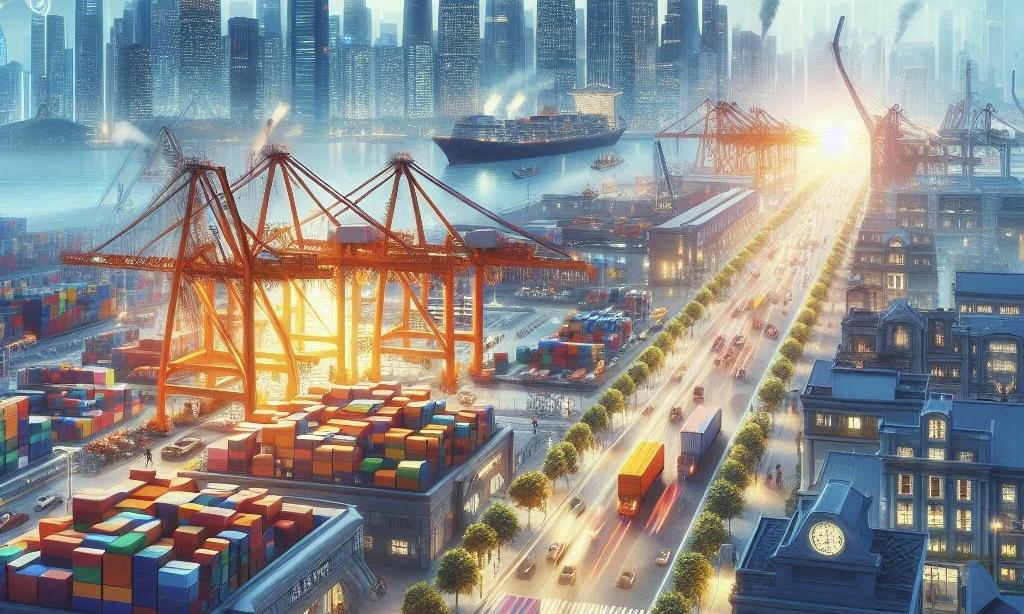China's retail sales grew by 2.7% in July, surpassing expectations and marking an improvement from June's 2.0% increase. However, industrial production and fixed-asset investment showed slower growth, highlighting the uneven recovery of the world's second-largest economy.
China’s Retail Sales Rise in July, But Slowing Industrial Production and Investment Highlight Uneven Recovery
According to a recent report by Nikkei Asia, in July, China's retail sales expanded at a higher rate than the previous month, while industrial production and investment declined. This underscores the uneven recovery of the world's second-largest economy.
According to data released by the National Bureau of Statistics (NBS) on August 15, the total retail sales of consumer products, which serve as an indicator of household expenditures, increased by 2.7% from the previous year. In a Bloomberg poll, the expansion rate was slightly higher than the consensus forecast of 2.6%, and it was also quicker than June's 2.0%, the lowest reading since December 2022.
Industrial production increased by 5.1% from the previous year, which was lower than the 5.3% increase observed last month and fell short of the 5.2% forecast.
In the interim, fixed-asset investment experienced a 3.6% increase in the first seven months of the year, which was lower than the 3.9% recorded in January-June and was below expectations. This suggests that investment experienced a substantial slowdown during the first month of the third quarter. The most significant detractor throughout the period was the 10.2% decline in real estate investment.
Continuing the declines observed in June, new home prices in significant cities such as Beijing and Shanghai decreased by 4.2% in July. In lesser cities, a comparable pattern was observed.
In the second quarter, China's gross domestic product increased by 4.7% yearly, falling short of expectations and putting pressure on the authorities, who are committed to achieving a year-end goal of "approximately 5%."
China's 5% Growth Target in Doubt Amid Sluggish Consumption and Investment, Says J.P. Morgan Economist
According to Zhu Haibin, chief China economist at J.P. Morgan in Hong Kong, the issue of whether China can achieve its 5% growth target was reopened following the release of second-quarter data. He cited sluggish growth in household consumption and property investment. The U.S. lender reduced the full-year GDP growth target to 4.7% by the second-quarter data. Zhu stated that the objective was contingent upon the government's implementation of "a gradual and calibrated policy approach."
In July, Chinese policymakers announced a comprehensive package of fiscal support and lending rate reductions to support household spending and business confidence, emphasizing increasing consumption.
Last month's economic data could have been more optimistic. In July, manufacturing activity decreased for the third consecutive month due to persistently low demand. Exports were less robust than anticipated, but imports increased by 7.2% yearly, suggesting that stimulus measures bolstered industrial demand.



 South Korea Factory Activity Returns to Growth in December on Export Rebound
South Korea Factory Activity Returns to Growth in December on Export Rebound  Asia Manufacturing PMI Rebounds as Exports and Tech Demand Drive Growth into 2026
Asia Manufacturing PMI Rebounds as Exports and Tech Demand Drive Growth into 2026  South Korea Exports Hit Record High as Global Trade Momentum Builds
South Korea Exports Hit Record High as Global Trade Momentum Builds  Trump Considers Starlink to Restore Internet Access in Iran Amid Protests
Trump Considers Starlink to Restore Internet Access in Iran Amid Protests  Supreme Court to Hear Cisco Appeal on Alien Tort Statute and Human Rights Liability
Supreme Court to Hear Cisco Appeal on Alien Tort Statute and Human Rights Liability  Allegiant to Acquire Sun Country Airlines in $1.5 Billion Deal to Expand U.S. Leisure Travel Network
Allegiant to Acquire Sun Country Airlines in $1.5 Billion Deal to Expand U.S. Leisure Travel Network  xAI Cash Burn Highlights the High Cost of Competing in Generative AI
xAI Cash Burn Highlights the High Cost of Competing in Generative AI  Asian Markets Slip as Precious Metals Cool, Geopolitical Tensions Weigh on Sentiment
Asian Markets Slip as Precious Metals Cool, Geopolitical Tensions Weigh on Sentiment  China Manufacturing PMI Rebounds in December, Offering Boost to Economic Growth Outlook
China Manufacturing PMI Rebounds in December, Offering Boost to Economic Growth Outlook  Vitol to Ship First U.S. Naphtha Cargo to Venezuela Under New Oil Supply Deal
Vitol to Ship First U.S. Naphtha Cargo to Venezuela Under New Oil Supply Deal  Oil Prices Slip Slightly as Markets Weigh Geopolitical Risks and Supply Glut Concerns
Oil Prices Slip Slightly as Markets Weigh Geopolitical Risks and Supply Glut Concerns  South Korea Inflation Rises to 2.3% in December, Matching Market Expectations
South Korea Inflation Rises to 2.3% in December, Matching Market Expectations  Walmart to Join Nasdaq-100 Index as It Replaces AstraZeneca Following Exchange Move
Walmart to Join Nasdaq-100 Index as It Replaces AstraZeneca Following Exchange Move  Chevron Sees Path to Boost Venezuela Oil Output by 50% After Trump Administration Talks
Chevron Sees Path to Boost Venezuela Oil Output by 50% After Trump Administration Talks  Boeing 737 MAX 10 Advances in FAA Testing as Certification Delays Continue
Boeing 737 MAX 10 Advances in FAA Testing as Certification Delays Continue  Johnson & Johnson Secures Tariff Exemption by Agreeing to Lower Drug Prices in the U.S.
Johnson & Johnson Secures Tariff Exemption by Agreeing to Lower Drug Prices in the U.S.  Oil Prices Stabilize at Start of 2026 as OPEC+ Policy and Geopolitical Risks Shape Market Outlook
Oil Prices Stabilize at Start of 2026 as OPEC+ Policy and Geopolitical Risks Shape Market Outlook 































